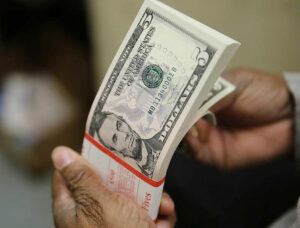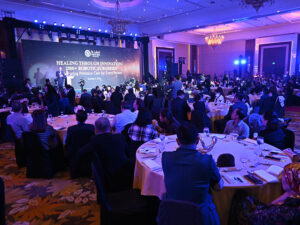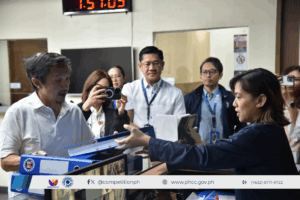THE PHILIPPINES’ gross international reserves (GIR) inched up in August as the value of the central bank’s gold holdings hit a record high.
Preliminary data from the Bangko Sentral ng Pilipinas (BSP) showed that dollar reserves went up by 0.46% to $105.9 billion as of end-August from $105.4 billion at end-July.
Year on year, dollar reserves dipped by 1.8% from $107.857 billion in August 2024.
“The Philippines’ gross international reserves rose in August 2025 due to higher global gold prices and income from Bangko Sentral ng Pilipinas’ investments,” the central bank said in a statement.
Ample foreign exchange buffers protect the country from market volatility and ensure that it is capable of paying its debts in the event of an economic downturn.
BSP data showed the level of dollar reserves as of end-August is enough to cover about 3.4 times the country’s short-term external debt based on residual maturity.
It is also equivalent to 7.2 months’ worth of imports of goods and payments of services and primary income, more than double the three-month standard.
“The latest GIR level provides a robust external liquidity buffer,” the central bank said.
International reserves are the central bank’s foreign assets held mostly as investments in foreign-issued securities, foreign exchange and monetary gold, among others.
These are supplemented by claims to the International Monetary Fund (IMF) in the form of reserve position in the fund and special drawing rights (SDRs).
Central bank data showed the BSP’s foreign investments stood at $85.852 billion as of end-August, down 0.4% from $86.187 billion at end-July. Year on year, it fell by 7%.
The value of the central bank’s gold holdings climbed by 5.4% to a record $14.523 billion at end-August from $13.783 billion at end-July. It jumped by 42.1% from $10.221 billion as of August last year. Gold tends to perform well during economic uncertainty.
Foreign exchange holdings rose by 8.3% to $897.8 million as of August from $828.9 million in the previous month. Year on year, it went up by 13.7%.
The country’s reserve position in the IMF likewise edged up by 1% to $736.4 million as of end-August from $729 million in the previous month. Year on year, it rose by 1.4%.
SDRs — or the amount which the Philippines can tap from the IMF’s reserve currency basket — inched up by 0.2% month on month to $3.895 billion as of August from $3.889 billion. Year on year, it went up by 1.3% from $3.847 billion.
Meanwhile, net international reserves grew by 0.46% to $105.9 billion from $105.4 billion as of end-July. These refer to the difference between the BSP’s reserve assets and reserve liabilities, including short-term foreign debt, and credit and loans from the IMF.
Rizal Commercial Banking Corp. Chief Economist Michael L. Ricafort said the month-on-month increase in gold holdings was due to rising gold prices in the world market.
“(This was) largely due to the latest month-on-month increase in gold holdings by $740 million or 5.4% to a new record high of $14.5 billion as world gold prices gained by 4.8% month on month in August 2025 to new record highs to $3,600 per ounce on Sept. 5, 2025,” he said.
However, Mr. Ricafort noted this was offset by the $335-million month-on-month decline in foreign investments amid market volatility and the higher US tariffs that took effect on Aug. 7.
“For the coming months, the country’s GIR could still be supported by the continued growth in the country’s structural inflows from OFW (overseas Filipino worker) remittances, BPO (business process outsourcing) revenues, and exports (though offset by imports),” he said.
Mr. Ricafort said the government’s plan to reduce foreign borrowings may also affect the GIR level in the coming months.
“Still relatively high GIR at $105.9 billion… among three-year highs [and] could still strengthen the country’s external position,” he said.
The BSP expects dollar reserves to reach $104 billion this year and $105 billion in 2026. — K.K.Chan






